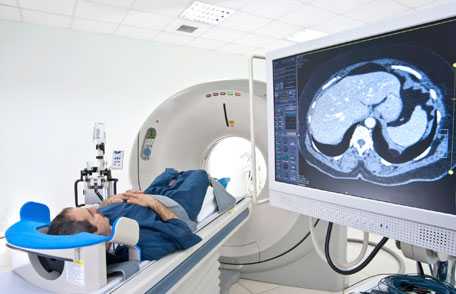Radiation in Medicine: Medical Imaging Procedures

Medical imaging tests are non-invasive procedures that allow doctors to diagnose diseases and injuries without being intrusive. Some of these tests involve exposure to ionizing radiation, which can present risks to patients. However, if patients understand the benefits and risks, they can make the best decisions about choosing a particular medical imaging procedure.
Most people have had one or more medical imaging tests. Imaging procedures are medical tests that allow doctors to see inside the body in order to diagnose, treat, and monitor health conditions. Doctors often use medical imaging procedures to determine the best treatment options for patients. The type of imaging procedure that your doctor may suggest will depend on your health concern and the part of the body that is being examined. Some common examples of imaging tests include:
- X-rays (including dental x-rays, chest x-rays, spine x-rays)
- CT or CAT (computed tomography) scans
- Fluoroscopy
If your doctor suggests x-rays or other medical imaging tests, you should consider the following:
- Medical imaging tests should be performed only when necessary.
- The U.S. Food and Drug Administration (FDA) recommends discussing the benefits and risks of medical imaging procedures with your doctor.
Benefits and Risks of Medical Imaging Procedures That Use Ionizing Radiation
Medical imaging tests can help doctors:
- Obtain a better view of organs, blood vessels, tissues and bones.
- Determine whether surgery is a good treatment option.
- Guide medical procedures involving placement of catheters, stents, or other devices inside the body, locate tumors for treatment and locate blood clots or other blockages.
- Guide joint replacement options and treatment of fractures.
As in many areas of medicine, there are risks associated with the use of medical imaging which uses ionizing radiation to create images of the body. Risks from exposure to ionizing radiation include:
- A small increase in the likelihood that a person exposed to radiation will develop cancer later in life.
- Health effects that could occur after a large acute exposure to ionizing radiation such as skin reddening and hair loss.
- Possible allergic reactions associated with a contrast dye injected into the veins to better see body structures being examined.
How can you reduce your exposure to diagnostic ionizing radiation?
In the case of x-rays or other tests involving exposure to ionizing radiation, doctors and radiation experts can help reduce your exposure to and risk of harm from diagnostic ionizing radiation by:
- Checking to see if you have had a similar test done recently that can provide them with the background information they need.
- Checking to see if a test that does not use ionizing radiation can provide similar information.
- Making certain the least possible amount of radiation needed to obtain a good quality image is used for your procedure.
- Providing protective lead shielding to prevent exposing other areas of the body to radiation.
What are the risks of medical imaging procedures for pregnant women?
Talk to your physician about the potential risks and benefits from the medical procedures. In many cases, the risk of an x-ray procedure to the mother and the unborn child is very small compared to the benefit of finding out about the medical condition of the mother or the child.
However, small risks should not be taken if they’re unnecessary. You can reduce risks from medical imaging procedures by telling your doctor if you are, or think you might be, pregnant whenever an abdominal x-ray is suggested by your doctor. Other options suggested by FDA that may be considered are as follows:
- If you are pregnant, the doctor may decide that it would be best to cancel the medical imaging procedure, to postpone it, or to modify it to reduce the amount of radiation.
- Depending on your medical needs, and realizing that the risk is very small, the doctor may feel that it is best to proceed with using a medical imaging procedure as planned.
In any case, you should feel free to discuss the decision with your doctor. For more information on medical imaging and pregnancy, please see X-rays, Pregnancy and You. Also, for more information on radiation safety in adult medical imaging, please visit the Image Wisely website.
Are there special considerations for children?
It is important that x-rays and other imaging procedures performed on children use the lowest exposure setting needed to obtain a good clinical image. The Image Gently Alliance, part of the Alliance for Radiation in Pediatric Imaging, suggests the following for imaging of children:
- Use imaging examinations when the medical benefit outweighs the risk.
- Use the most appropriate imaging techniques, matched to the size of the child.
- Use alternative imaging methods (such as ultrasound or MRI) when possible.
For more information about medical imaging procedures that do not use ionizing radiation, please see Radiation in Medicine: Medical Imaging Procedures.
The FDA also provides information for parents, patients, and healthcare providers to address concerns about the benefits and risks of medical imaging procedures for children.
Please visit CDC’s Radiation and Your Health website for more information.
More Information
FDA
- Reducing Radiation from Medical X-rays
- Pediatric X-ray Imaging
- Radiology and Children: Extra Care Required
- X-Rays, Pregnancy and You
- Medical X-rays: How Much Radiation are You Getting
Image Gently
Image Wisely
EPA
- RadTown USA Medical X-Rays
- Radiation Protection Guidance for Diagnostic and Interventional X-Ray Procedures
US National Library of Medicine
- Page last reviewed: May 30, 2017
- Page last updated: May 30, 2017
- Content source:
- National Center for Environmental Health, Division of Environmental Hazards and Health Effects
- Page maintained by: Office of the Associate Director for Communication, Digital Media Branch, Division of Public Affairs




 ShareCompartir
ShareCompartir